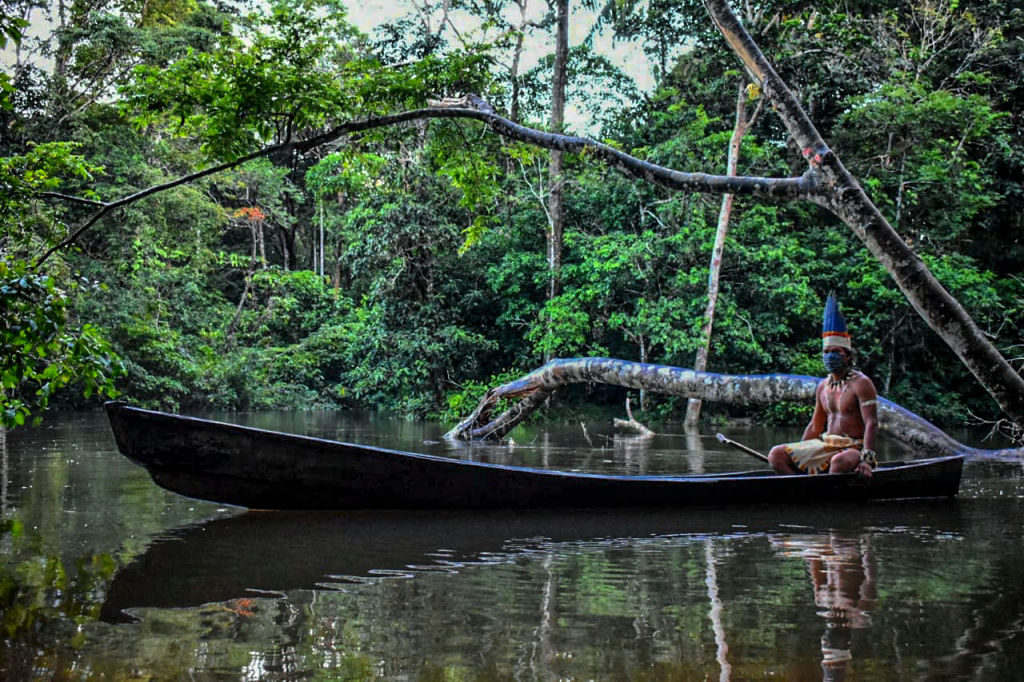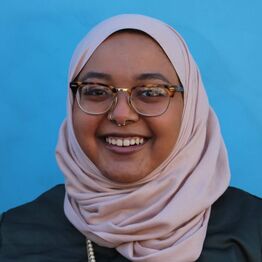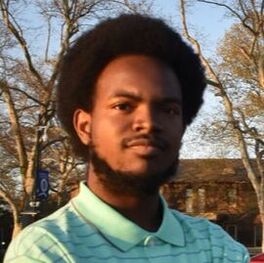With 9.3 percent of the Brazilian population living in extreme poverty as the Covid-19 pandemic continues to ravage entire communities, cries for help continue to sound throughout the country—and similar stories echo across much of South America.
Feeling abandoned by their government, communities across Latin America have been forced to come up with pandemic protection and relief measures through local aid efforts. One such group is Brazil’s Landless Workers Movement, which has aimed to fill this vacuum by bridging gaps between urban and rural populations and proving the power of community organizing in the process.
Brazil’s Landless Workers Movement, number 1.5 million members, says it has distributed 4,300 metric tons of food and 860,000 meals over the last year to both urban and rural parts of the country—despite villainization from the Bolsonaro regime. Backlash from Brazil’s leadership led to a retort from the Landless Workers Movement that has deep resonance across the continent—“#FicaEmCasaMasNãoEmSilêncio,” or “Stay home but not silent.”
Covid-19 Responses (and Failures) in Brazil, Peru, and Colombia
The ongoing Covid-19 pandemic has dramatically altered day-to-day life for hundreds of millions of people worldwide. Few regions, however, have been as dramatically impacted as Latin America.
Many nations in South America were already plagued by extreme levels of distrust between governments and their citizens, and Covid-19 only exacerbated this tension. With disorganized and conflicting public health orders and varying levels of response intensity, the rift between populaces and their governments has widened. Skepticism on the severity and transmissibility of Covid-19, the effectiveness of masks and social distancing, and the necessity of vaccinations have been fueled by misinformation spread throughout the population via social media sites such as WhatsApp and Facebook, often with the support of government leaders.
There are countries such as Uruguay that have handled the pandemic relatively well, being quick to roll out effective health initiatives, testing centers, and vaccination plans. But others have not. Brazil, Colombia, and Peru in particular have the three highest Covid-19 mortality rates in the region, and the government responses in these countries have been dramatically less effective.
The governments of Brazil, Colombia, and Peru have all responded—and failed—in different ways. Their experiences illustrate the challenges of responding to the pandemic and the kinds of gaps that communities have been forced to fill.
Bolsonaro and Scientific Misinformation in Brazil
Brazil has experienced one of the worst Covid responses in Latin America. With nearly 275 deaths per 100,000, their mortality rate is notably higher than the United States.
The similar shortcomings of the Bolsonaro and Trump administrations illustrate the dangers of misinformation and medical skepticism. Early on during the first wave of Covid-19, President Bolsonaro went to great lengths to minimize the severity of the epidemic—refusing to implement lockdowns and social distancing guidelines, going out of his way to appear in public without a mask, and comparing Covid-19 to the flu. As a result, cases soared as the virus spread through the population virtually unchallenged.
In spite of the growing infection rates and increasing deaths, the health ministry in Brazil dragged its feet when deciding to send emergency financial support, food aid, and medical supplies to its people. Influence from the administration slowed and, in some cases, prevented effective and decisive action from Brazil’s public health service, Sistema Único de Saude (SUS).
Colombia and the Dangers of a Hasty Reopening
Colombia has a long history of political unrest and social instability. Caught between powerful drug trafficking organizations and paramilitary groups waging guerilla warfare, the nation has seen decades of violence and corruption that has hampered socioeconomic progress. In spite of this, the past few years have seen a concerted effort to de-escalate violence and advance trade and economic development, resulting in improved conditions for its people.
But even though Colombia handled its initial Covid response much better than some of its neighbors, the slowdown of economic activity caused by lockdowns erased years of progress and sunk large segments of the population into poverty.
In an effort to ease the strain on the working class, Colombia eased its lockdown restrictions in an effort to get its citizens back to work. As restaurants, bars, movie theatres, and many other businesses began hosting large groups of people once again, daily cases increased and mortalities surged. Colombia’s government did not have the means to pay its citizens to stay home, and without such a safety net, many Colombians were either forced to return to work or fall further into poverty.
In this stage of the pandemic, more young people are now contracting the illness and ending up in hospitals. While many elderly Colombians have already been vaccinated, relatively few young people have had the opportunity to do so. Whether transmission occurred while patronizing newly reopened businesses or participating in street protests, Colombia’s youth have found themselves exposed to the significant risks of this stage of the pandemic.
Poverty, Politics, and Distrust in Peru
In Peru, Covid-19 has ravaged the population on an uncontested scale. With 609 Covid related deaths per 100,000, they boast the highest mortality rate of any nation.
In a perfect storm of unfavorable conditions, nearly 70 percent of the population works in the informal sector, making the lockdowns and economic restrictions much more harmful to the financial and physical security of their citizens. Lacking access to formal unemployment benefits and health insurance, millions of people had their livelihoods placed in a state of crisis.
Covid-19 also arrived at one of the worst possible times for the developing nation: during national elections. Covid-19 became a part of the country’s highly contested politics, with former president Martin Vizcarra and many other political elites jumping the line on vaccines with the aid of the minister of health. This endangered the most vulnerable Peruvians who desperately needed vaccine access.
This scandal greatly weakened trust between the health ministry and the people in a country already distinguished by some of the highest levels of government distrust in South America. Despite having a quick initial response to the pandemic, many citizens went on to ignore the lockdown restrictions and return to their jobs as street vendors and merchants, creating hotbeds of infection. This, coupled with the inherent inaccessibility of large portions of the mountainous country, contributed to the failure of the historically underfunded healthcare system.
Urban Impacts and Protests
The harrowing pandemic experiences of Brazil, Colombia, and Peru have been shaped by demographic trends in Latin America. Latin America is one of the most rapidly urbanizing regions in the world. Some of the region’s largest cities, such as Rio de Janeiro, have experienced rapid growth that has led to poverty, crowding, and violence. These cities have been especially vulnerable to the impacts of Covid-19, from increased death tolls to loss of education. Effective and comprehensive vaccine distribution in cities like these is also a long way off.
The governments of Brazil, Colombia, and Peru have had dysfunctional responses to Covid-19 in these cities, which has contributed to high death rates. The impacts of the pandemic and frustration with the government response have led to escalating urban protests.
Some of the largest protests have taken place in Brazil against the government of President Bolsonaro. One of the protesters' grievances was allegations of corruption related to acquiring the Covid-19 vaccine. Protestors took to the streets shouting “Out Bolsonaro,” but the Bolsonaro government has largely been unwilling to change course. At the time of these protests, Brazil was facing a death toll of over 500,000, with only 11 percent of Brazil’s population of 212 million fully vaccinated.
In Peru, Covid-19 has been yet another destabilizing factor in the country’s extremely volatile politics, and protests have been frequent. The country has had five presidents since 2016, with multiple governments mired in corruption scandals. Peru’s 2021 presidential election was accompanied by a massive wave of street protests, and culminated in the election of Pedro Castillo, a teacher and political newcomer who promised wide-ranging reforms, including a renewed effort to fight the pandemic.
Protests, particularly in densely populated capital cities, have been one of the main ways for urban populations to try to influence the response to Covid-19. While the Peruvian protests may have played a role in influencing the elections, it remains to be seen whether urban discontent with Bolsonaro will threaten his presidency. In the meantime, residents of Latin America’s cities have found various ways to help their communities in the absence of effective government responses.
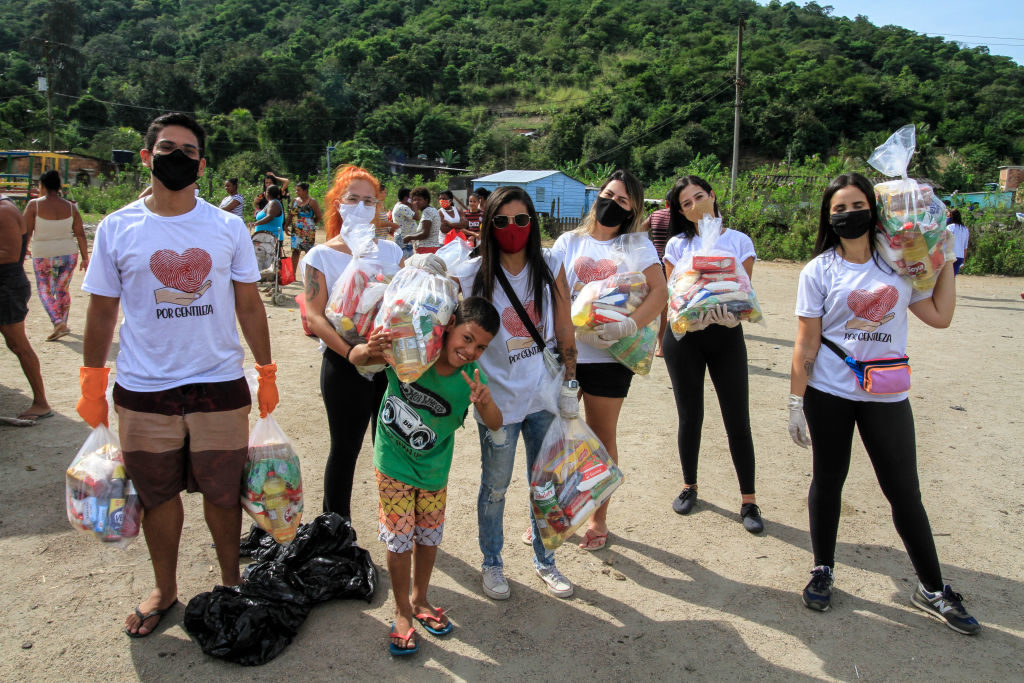
For better or worse, in Latin America today civil society institutions, community based groups, are absolutely essential for guaranteeing decent government, access to affordable public services—basic services such as safety in the pandemic, basic health services, [or] security for your family.
Benjamin Gedan
Lending a Hand
In these urban areas, community-based initiatives are attempting to fill gaps in Covid-19 response and relief that governments have struggled to address.
In Rio de Janeiro, Bolsonaro’s government consistently opposed public health mandates such as lockdowns, but the country has faced an epidemic of hunger all the same. Over 19 million Brazilians went hungry in the pandemic’s first year, and over half of the country’s population experienced food insecurity. Even food pantries have been very limited and under-resourced due to government neglect. Last year, the government used its emergency budget to help put meals on the table for millions of locals, but this support was inadequate.
“Hunger has been a big issue throughout the pandemic,” said Benjamin Gedan, deputy director of the Wilson Center’s Latin American Program and the director of its Argentina Project. “And unfortunately, it has been civil society groups that have had to step up and provide that support in a lot of places where the government wasn’t doing so.”
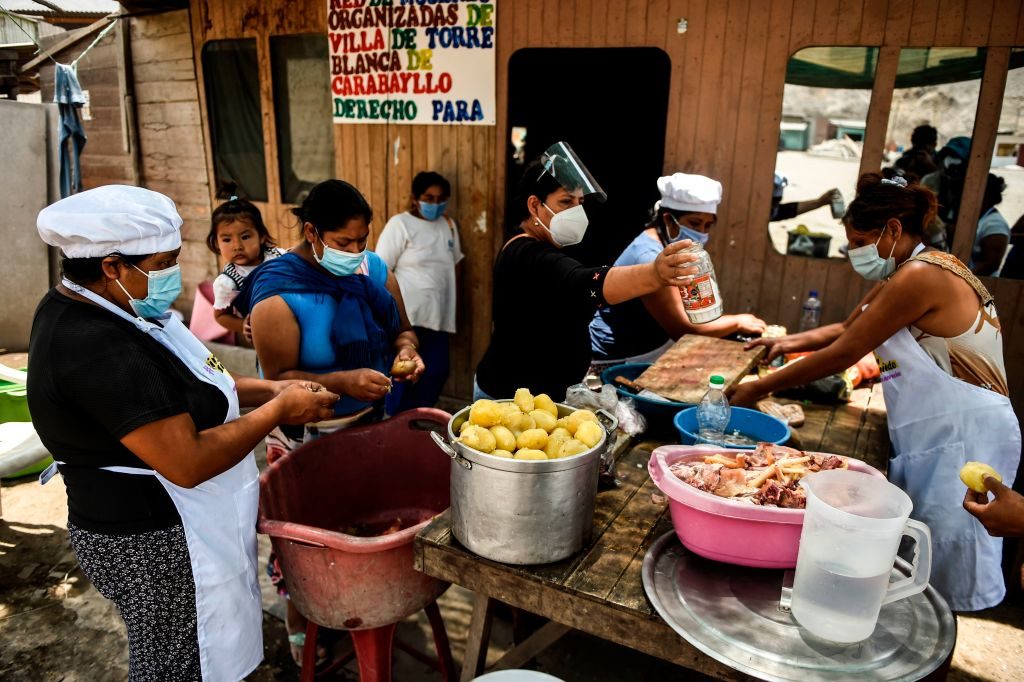
In May 2020, at the height of extended lockdowns in Bogotá, Colombia, the city had managed to distribute only 80,000 food aid packages in a city of 8 million people. For people in Bogotá working in the informal sector, the lockdowns completely cut off their livelihoods, leaving them hungry and desperate. Many local efforts, such as a volunteer-led soup kitchen, sprang up in the city, drawing on existing civil society organizations, churches, and simply on solidarity between neighbors.
These food aid efforts are just one example of how communities have filled the gaps left by inadequate government responses. In cities, communities have been able to lean on existing civil society networks and outside aid organizations, which frequently have presences in densely populated areas. A single well-coordinated program like this can impact many thousands of people in an urban environment. But rural communities must find other ways to fill the gaps.
A Shift in Perspective (and Job Description)
Rural areas in Latin America face similar problems to cities—hunger, unemployment, and the spread of Covid-19. Organizations trying to help here face different challenges though, such as delivering aid to people who are spread out and often difficult to access. At the start of the pandemic, as Covid-19 began to pose a threat to rural populations, non-community-affiliated organizations and international NGOs with established community presences shifted their focus from humanitarian work to healthcare.
The Patrulla Aérea Civil Colombiana (PAC) was one of these organizations. Based in Bogotá, the Colombian non-profit has a history of transporting medical professionals to Colombia’s isolated regions that are often reachable only by air or boat.
While they typically go on medical brigades varying from performing surgeries and simple physical checkups, the Covid-19 crisis put a halt to expanding health initiatives. Instead, the PAC has spent much of the last 18 months flying in personal protective equipment (PPE) and serving as the primary health and information providers for communities around the nation.
Tradition Takes It All
Covid-19’s constantly changing nature led to a strange pattern whereby news reaching rural communities was often already outdated. The slow diffusion of resources, information, and treatments was hard-hitting due to the lack of efficient infrastructure. And it is not a new phenomenon.
Arachu Castro, the Samuel Z. Stone Chair of Public Health in Latin America and director of the Collaborative Group for Health Equity in Latin America at Tulane School of Public Health and Tropical Medicine, notes “oftentimes Indigenous communities prior to the epidemic lived in areas that were underserved by public health services.”
This led to a turn toward traditional resources already within these communities, such as traditional medicine and intercultural health, and the combined use of Indigenous and Western medical practices.
In Yarinacocha, Peru, indigenous leaders acted swiftly during the government’s neglect of non-urban populations in the pandemic. Frustrated with the mounting deaths of community members, citizens began using eucalyptus, lemon, chamomile, and other local remedies to treat the symptoms of Covid-19, such as to clear lung blockages.
Peru’s government, however, has not only struggled to engage indigenous communities and their medicinal practices, but has refused to track Covid-19 data in rural Indigenous communities, despite over 43 percent of the nation’s population being Indigenous.
Colombia, on the other hand, is heavily utilizing intercultural health. The Wayúu people, in cooperation with the government, have received support from the World Health Organization (WHO) and the Pan American Health Organization (PAHO) to implement intercultural health services.
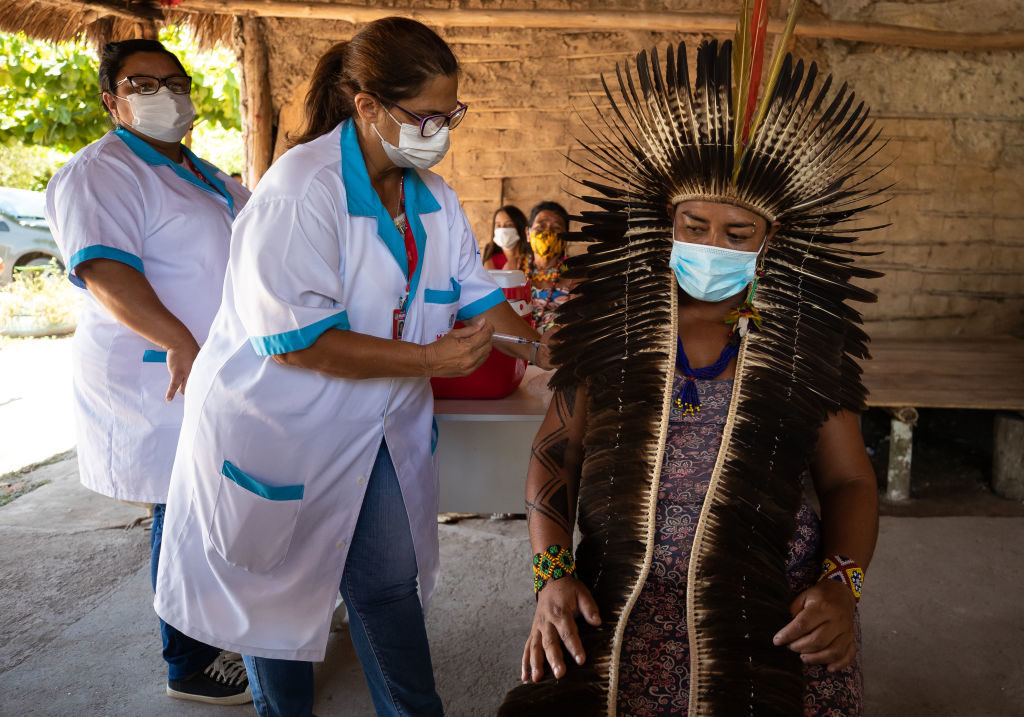
Through this program, 16 community health workers have been appointed as healthcare leaders who “must carry out community epidemiological surveillance, promote healthy lifestyles, monitor chronic diseases, assist pregnant women and children under five years of age, and support risk management to prevent communicable diseases,” says Gina Tambini, a PAHO/WHO representative in Colombia.
The spectrum of government responses to Indigenous medicine—integration versus neglect—are part of the reason why community-led responses have been so vital during the Covid-19 crisis.
All for One and One For All
In rural Latin American communities, much like in cities, many people work outside the formal sector. This can render them effectively invisible to governments, making it difficult for them to receive aid and services.
“Whether you’re a poor rural farmer or a poor street vendor, if you’re not participating in the formal public health insurance or public social security system, that means that you fall out of many mechanisms where you would be able to achieve support to sustain yourself,” explains American University professor William Godnick.
Without formal government programs, rural communities came together through advocacy on the national level. In Brazil, Indigenous leaders met with government leaders to discuss their situation and implement the Ministry of Health’s National Contingency Plan for Human Infection with the New Coronavirus in Indigenous Peoples.
This result, however, implied “that Indigenous communities had no say in the plan’s design, that the plan is ambiguous, and that it only contains general guidelines without setting out concrete measures [or] a timetable or responsibilities,” explains the Economic Commission for Latin America and the Caribbean (ECLAC).
In Peru, as revealed in the same ECLAC study, legislative improvements allowed the Ministry of Culture to receive $1.4 million in May 2020 to spread public health changes through Indigenous languages, along with implementing safeguarding measures for citizens in isolation.
Oftentimes Indigenous communities prior to the epidemic lived in areas that were underserved by public health services.
Arachu Castro
Beyond activist efforts, populations have used Covid-19 measures as a source of community building. Through following changes in maternal and pre-natal health in Peru amid the pandemic, researchers Stefan Reinders, Angela Alva, Luis Huicho, and Magaly M. Blas illustrated a key aspect of protection was taking care of one’s neighbors.
The research shows action-based plans within Peruvian Amazon communities, including villager groups blocking entry ports, and imposing movement restrictions and harsh travel limitations. None of these practices were implemented by formal government agencies, yet community members were quick to act on them, actively preventing further infection.
Working Hand-in-(Socially Distant) Hand
In areas hundreds or thousands of miles apart, separated by forest, jungles, and other harsh terrain, Latin American communities both rural and urban have struggled in the face of Covid-19. Given the presence of major problems in these areas before the pandemic, it remains difficult to be optimistic about the future here—especially with the slow distribution of vaccines across the region.
While confidence in governing bodies remains low, both rural and urban communities have been able to organize themselves to marshal resources and advocate for the help they need from their governments and the international community. As the pandemic lingers on, these governments need to pay better attention to these efforts in order to better serve the health needs of these communities now and in the future.
“When people in the community are able to share their needs and ideas to help shape health programs they themselves buy into, government or health officials better understand what the needs are—it’s a greater improvement of outcomes,” explains Katherine Bliss, a senior fellow at the CSIS Global Health Policy Center.
Local communities have done everything except stay silent while they have stayed home—but have their government leaders learned to listen 18 months later?
